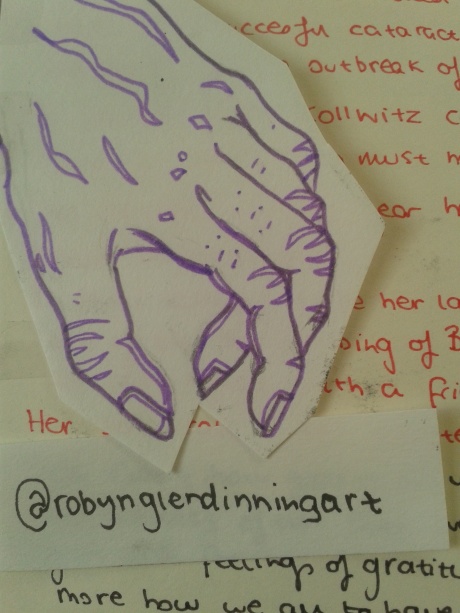
Cave painting of a bison is the Altamira caves in Spain – taken from : http://en.wikipedia.org/wiki/File:AltamiraBison.jpg
What is illustration? This was a question I asked myself when I started my summer project. For which I had to pick one artist or movement to research and write about. So I began with illuminated manuscripts which were featured in the Image lecture.
I began with the dictionary and the definition of illustration and illustrate : http://www.oxforddictionaries.com/definition/english/illustration?q=illustration Oxford dictionary definition. To illustrate comes from lustrare which means to illuminate thus leading me to illuminated manuscript. Most illuminated manuscripts were created predominantly in the Middle ages and laterally in the Renaissance. The word manuscript comes from the Latin for handwritten. which makes sense as illuminated manuscripts were handwritten over long periods of time by monks for the most part. If a manuscript was to be illustrated it would be sent to an illuminators. When moveable type and the print press came to the fore front want for the expensive and labour intensive manuscripts died out. Manuscripts like the Book of Kells and the Lindisfarne Gospels were written one vellum which was made of sheep or cow skins. So large manuscripts could use a herd of sheep to make.

Image of Christ from the Aberdeen Bestiary. Taken from : http://en.wikipedia.org/wiki/File:AberdeenBestiaryFolio004vChristInMajesty.jpg
Here’s a wee link to a YouTube clip of a Horrible Histories episode that explained it better once it gets past monk sign language : https://www.youtube.com/watch?v=9wVTP2016G0
Illuminated manuscripts are viewed as one of the earliest examples of illustration however some argue that ” Art was illustrative long before it was holy” ( Illustration, A Visual History. Steven Heller and Seymour Chwast. Abrams, New York, 2008) Therefore can cave paintings such as those at Lascaux and Altamira be viewed as illustration. Cave painting can be seen as man recording and illustrating the world around him albeit before text. I believe that cave painting can be viewed as illustration as it was integral to the visual mass communicative language of early man.
Now this lead me to the age-old question of what is the difference between fine art and illustration. In “Illustration, A Visual History” by Steven Heller and Seymour Chwast, states that ” illustration is a clearly defined act of making art, the goal of which is to illuminate the printed page.” Illustration is not as some view it a lesser art in comparison to what is viewed as high or fine art. Illustration is art for the populace. It is a form of mass communication for a mass audience. There are many similarities between illustration today and the fine art of the Renaissance period. Whose artists, such as Durer used mass communicative processes such as printmaking to sell their artwork or to make it for themselves. There is no denying that illustration is sometimes very commercial but then again so is fine art. I feel that the idea at fine art is a higher art form is false and that it is almost impossible to completely separate fine art and illustration. They both have as much merit as each other.
References and Links to webpages that helped me write this post :
Oxford definition of fine art : http://www.oxforddictionaries.com/definition/english/fine-art?q=fine+art
Here is Illustration Art’s view on fine art and illustration : http://illustrationart.blogspot.co.uk/2011/10/old-question-finally-answered.html
Heller, S. Chwast, S. (2008) Illustration: A Visual History. New York. Abrams.
All of the above links were accessed on the 10.11.2013.

